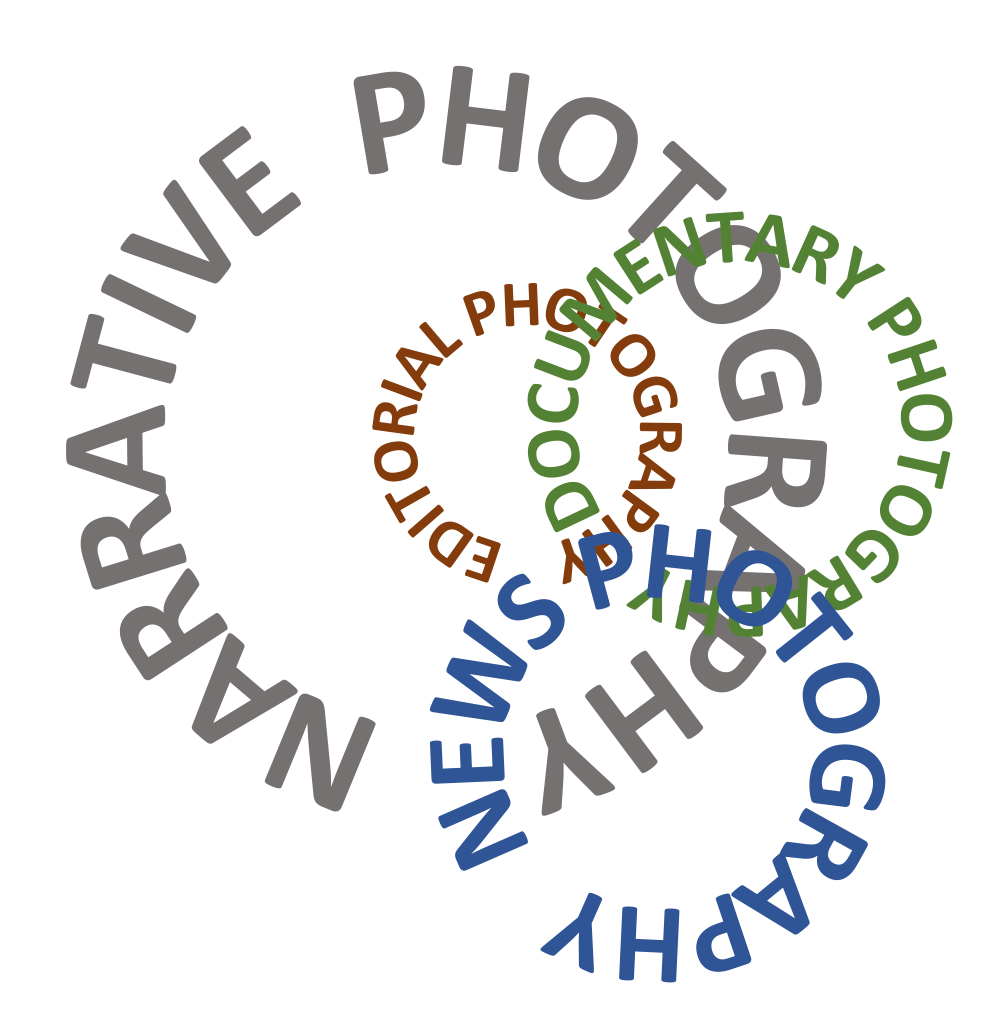Narrative photography proposes that an image or a series of images can make unfold a story; or make many stories unfold. It is visual storytelling through photographs.
 |
| Narrative Photography |
The question is whether photographs are capable of telling a story? Photography captures single discrete moments; therefore there is no narrative
(that which has beginning, middle, and end. Narrative is irreducibly durative). Photography is only a face. How can one look at it and think, feel, or intuit what is beyond it? The camera's rendering of reality hides more than it discloses. Everything that we see hides another thing, Rene Magritte. Only that which narrates can make us understand; photography does not narrate, therefore photography cannot make us understand anything. In photography, the photographer invites us to get meaning out of the picture; in truth the viewers are getting only their meaning to the extant of what they have seen, heard, and read. Photograph cannot tell a story, so invitations to understand the story is to deduce, speculate, and fantasise. We only arrive at an illusion of knowledge.
It may be true, that there is no narrative story in a photograph. There is no beginning, middle, and end. But that is not the end. All fiction (story) is a well constructed fight against the absurd. They polish life for us, in the pretence of making it sensible to us. On the contrary, photography does not polish life for us. Photography facilitates narrative; it facilitates raw narratives. Photography is a window to the absurd. These are real images of life. It shows you life. An artist puts meaning into a piece of art, so that it fights against the absurd. A writer puts meaning into a piece of writing, so that it fights against the absurd. Photography does not put meaning into it, it just shows an image from life. It makes the viewer see the unpolished state of affairs (a story). The debate is on.
Study the PDF below (for academic use only)
Considering the method of capturing the image narrative photography could be seen as:
Editorial Photography: Here pictures are never ‘set up’ or staged. These are mainly for news magazines, newspapers, and wire services. The photographer is a fly on the wall, only capture scenes unfolding in front of you. Editing these images would mean cropping, adjusting brightness and contrast, white balance, saturation, and sharpness.
Creative Photography: Creative here means ‘created’ or staged narrative photography. Examples are portraiture, studio work, corporate photography, etc. Here one has complete control of the situation. Can manipulate the light, the setting, and the subject to create an image that one wants. Here postproduction has no limits.
Photographic Tools for Narrative Photography
The use of following creative controls decide the narrativity of photographs. Narrativity refers to the processes by which a story is both presented by the storyteller, and interpreted by the viewer.
• Composition
• Light
• Colour
• Contrast
• Depth of Field
• Proportion
• Emphasis
• Subtext
Narrativity and Gestalt theory
The Narrativity of a photograph depends on how viewers perceive a photograph. Gestalt theory, devised by a group of German psychologists in the 1920, proposed that human mind groups together parts of an image instead of treating it as a series of unconnected elements. As Gestalt psychologist Kurt Koffka claims, “the whole is other than the sum of the parts”. For example if you were given the components of a motor vehicle, they would have no value unless they were combined to create a car in which you can travel.
A photograph is a configuration of lines, shapes, colour, composition, and context. Human brains automatically see structures, patterns, and connections.
Many Principles of Gestalt are at play in narrative photography:
- Figure and ground
- Similarity
- Continuation
- Closure
- Proximity
- Common fate
- Simplicity
- Emergence
Comments
Post a Comment